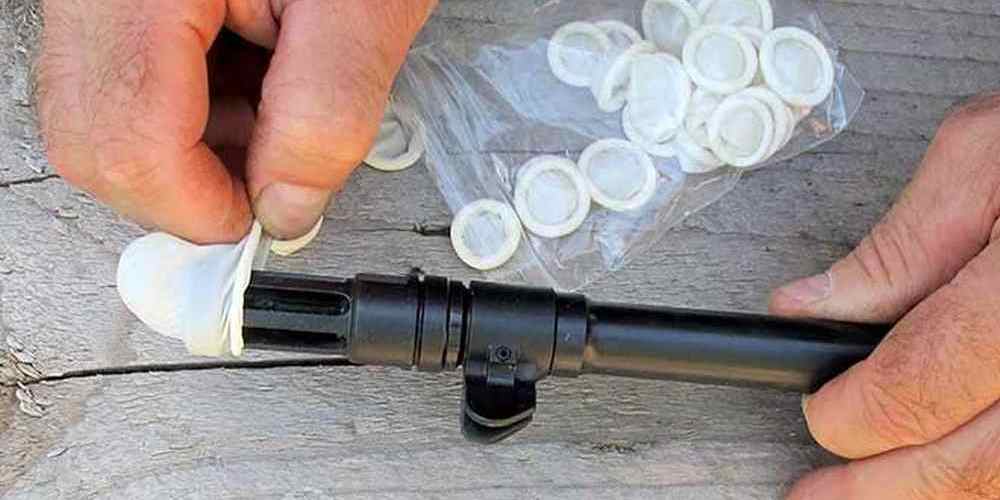“Cut vs. Polygonal Rifling: Choosing the Right Barrel for Precision and Performance”
Accuracy
When it comes to rifle barrels, one of the key factors that can greatly impact accuracy is the type of rifling used. Rifling refers to the spiral grooves cut into the inner surface of the barrel, which help stabilize the bullet as it travels down the barrel. There are two main types of rifling commonly used in rifle barrels: cut rifling and polygonal rifling. Each type has its own set of pros and cons that shooters should consider when choosing a rifle.
Cut rifling is the traditional method of rifling a barrel, where the grooves are cut into the barrel using a cutting tool. This method has been used for centuries and is known for its reliability and consistency. Cut rifling produces sharp, distinct grooves that provide excellent grip on the bullet, helping to stabilize it as it travels down the barrel. This can result in improved accuracy, especially at longer distances.
One of the main advantages of cut rifling is its ability to produce consistent and repeatable results. The cutting process allows for precise control over the depth and width of the grooves, ensuring that each groove is uniform and consistent throughout the length of the barrel. This can help to minimize variations in bullet trajectory, leading to more consistent shot placement.
However, cut rifling does have some drawbacks. One of the main disadvantages is that the sharp edges of the grooves can cause increased fouling and lead buildup in the barrel. This can affect the accuracy of the rifle over time, as fouling can disrupt the bullet’s path down the barrel. Regular cleaning and maintenance are essential to prevent fouling from affecting the rifle’s accuracy.
On the other hand, polygonal rifling is a newer rifling method that has gained popularity in recent years. Instead of sharp, distinct grooves, polygonal rifling uses a series of rounded, polygonal-shaped grooves to impart spin on the bullet. This can result in less fouling buildup in the barrel, as there are no sharp edges for fouling to cling to.
One of the main advantages of polygonal rifling is its ability to reduce fouling and lead buildup in the barrel. The rounded grooves of polygonal rifling are less prone to fouling than the sharp edges of cut rifling, making maintenance easier and potentially extending the life of the barrel. This can be especially beneficial for shooters who prefer to shoot a high volume of rounds without frequent cleaning.
However, polygonal rifling does have some drawbacks. One of the main disadvantages is that it may not provide as much grip on the bullet as cut rifling. This can potentially lead to decreased stability and accuracy, especially at longer distances. Some shooters also report that polygonal rifling can be more difficult to clean, as fouling can be harder to remove from the rounded grooves.
In conclusion, both cut rifling and polygonal rifling have their own set of pros and cons when it comes to rifle barrels. Cut rifling is known for its consistency and accuracy, while polygonal rifling offers easier maintenance and potentially longer barrel life. Shooters should consider their shooting preferences and maintenance habits when choosing between the two rifling types. Ultimately, the best rifling type for a rifle barrel will depend on the shooter’s individual needs and preferences.

Barrel Life
When it comes to rifle barrels, one of the key factors that shooters consider is the type of rifling used. Rifling is the spiral grooves cut into the barrel that impart spin to the bullet, stabilizing its flight. Two common types of rifling are cut rifling and polygonal rifling, each with its own set of pros and cons. In this article, we will explore the impact of rifling type on barrel life.
Cut rifling is the traditional method of rifling a barrel, where the grooves are cut into the barrel using a broach or button. This method has been used for centuries and is known for its accuracy and consistency. Cut rifling produces sharp, well-defined grooves that grip the bullet tightly, ensuring a stable flight path. However, cut rifling can also be more prone to fouling and wear over time.
On the other hand, polygonal rifling is a newer technology that uses a series of rounded, polygonal grooves to impart spin to the bullet. This type of rifling is known for its ease of cleaning and resistance to fouling. Polygonal rifling also tends to produce less barrel wear, as the rounded grooves distribute the pressure more evenly along the barrel.
In terms of barrel life, cut rifling may have a slight edge over polygonal rifling. The sharp edges of the cut rifling can wear down over time, especially with high-velocity rounds or frequent shooting. This can lead to decreased accuracy and increased fouling. However, with proper maintenance and care, a cut rifled barrel can still last for thousands of rounds.
Polygonal rifling, on the other hand, tends to have a longer barrel life due to its smoother grooves and reduced fouling. The rounded edges of the grooves distribute the pressure more evenly, reducing wear on the barrel. This can result in a longer-lasting barrel that maintains its accuracy over time. Additionally, polygonal rifling is easier to clean, which can help prolong the life of the barrel.
Ultimately, the choice between cut rifling and polygonal rifling for your rifle barrel will depend on your shooting preferences and maintenance habits. If you prioritize accuracy and are willing to put in the extra effort to clean and maintain your barrel, cut rifling may be the better option for you. However, if you value ease of cleaning and longevity, polygonal rifling may be the way to go.
In conclusion, both cut rifling and polygonal rifling have their own set of pros and cons when it comes to barrel life. Cut rifling may offer slightly better accuracy but can be more prone to wear and fouling. Polygonal rifling, on the other hand, tends to have a longer barrel life and is easier to clean. Ultimately, the best choice for your rifle barrel will depend on your shooting preferences and maintenance habits.
Cleaning
When it comes to rifle barrels, one of the key considerations for shooters is the type of rifling used. Rifling refers to the spiral grooves cut into the barrel that impart spin to the bullet, stabilizing its flight. Two common types of rifling are cut rifling and polygonal rifling, each with its own set of pros and cons.
Cut rifling is the traditional method of rifling a barrel, where the grooves are cut into the barrel using a broach or button. This method has been used for centuries and is known for its accuracy and consistency. Cut rifling produces sharp, well-defined grooves that provide excellent grip on the bullet, resulting in consistent and predictable bullet flight.
One of the main advantages of cut rifling is its ease of cleaning. The sharp edges of the grooves make it easy to remove fouling and debris from the barrel, ensuring that the rifle maintains its accuracy over time. A simple cleaning rod and brush are usually all that is needed to keep a cut-rifled barrel in top condition.
On the other hand, polygonal rifling is a more modern method of rifling that uses a series of rounded, polygonal-shaped grooves to impart spin to the bullet. This type of rifling is known for its ability to reduce fouling and increase muzzle velocity. The smooth, rounded grooves of polygonal rifling are less prone to fouling buildup, making it easier to clean and maintain.
However, one of the drawbacks of polygonal rifling is that it can be more difficult to clean than cut rifling. The rounded grooves can trap fouling and debris, requiring more effort to remove. Specialized cleaning tools may be needed to effectively clean a polygonal-rifled barrel, adding to the maintenance requirements of the rifle.
In terms of accuracy, both cut rifling and polygonal rifling can produce excellent results. Cut rifling is known for its consistency and precision, making it a popular choice among precision shooters. Polygonal rifling, on the other hand, can provide slightly higher muzzle velocities and reduced fouling, which can lead to improved long-term performance.
Ultimately, the choice between cut rifling and polygonal rifling comes down to personal preference and shooting style. Shooters who prioritize ease of cleaning and reduced fouling may prefer polygonal rifling, while those who value precision and consistency may opt for cut rifling.
Regardless of the type of rifling chosen, proper cleaning and maintenance are essential to ensure the longevity and performance of the rifle barrel. Regular cleaning with the appropriate tools and solvents will help prevent fouling buildup and maintain accuracy over time.
In conclusion, both cut rifling and polygonal rifling have their own set of pros and cons when it comes to rifle barrels. Shooters should consider their priorities and shooting style when choosing between the two types of rifling. With proper cleaning and maintenance, both types of rifling can provide excellent performance and accuracy for years to come.
Cost
When it comes to rifle barrels, one of the key decisions that shooters have to make is whether to go with cut rifling or polygonal rifling. Both methods have their own set of pros and cons, and one of the factors that shooters often consider is the cost associated with each option.
Cut rifling is a traditional method of rifling a barrel that involves cutting grooves into the bore of the barrel. This method has been used for centuries and is known for producing accurate and consistent results. However, cut rifling can be a time-consuming and labor-intensive process, which can drive up the cost of the barrel.
On the other hand, polygonal rifling is a more modern method that involves shaping the bore of the barrel into a polygonal shape, rather than cutting grooves into it. This method is often faster and more efficient than cut rifling, which can result in a lower cost for the barrel. Additionally, polygonal rifling is known for reducing fouling and increasing muzzle velocity, which can be appealing to shooters.
However, there are some drawbacks to polygonal rifling when it comes to cost. Because this method requires specialized machinery and expertise, the initial investment in equipment and training can be higher than with cut rifling. This can drive up the cost of the barrels for shooters, especially if they are looking for custom or high-end options.
In terms of maintenance and longevity, both cut and polygonal rifling have their own considerations. Cut rifling is known for being easier to clean and maintain, as the grooves in the bore are more accessible to cleaning tools. This can help extend the life of the barrel and ensure consistent performance over time.
On the other hand, polygonal rifling is known for being more resistant to fouling and wear, which can result in a longer barrel life. This can be a cost-saving factor for shooters who want a barrel that will last for many rounds without needing to be replaced or re-rifled.
Ultimately, the decision between cut and polygonal rifling will come down to the shooter’s preferences and priorities. If cost is a major factor, shooters may want to consider the initial investment in equipment and training for polygonal rifling, as well as the potential savings in maintenance and longevity. However, if accuracy and tradition are more important, cut rifling may be the better option despite the higher cost.
In conclusion, both cut and polygonal rifling have their own pros and cons when it comes to cost. Shooters should carefully consider their priorities and budget when choosing a rifle barrel, and weigh the benefits and drawbacks of each rifling method. By doing so, shooters can ensure that they are getting the best value for their money and the performance they desire from their rifle.
Recoil
When it comes to rifle barrels, one of the key factors that shooters consider is the type of rifling used. Rifling is the spiral grooves cut into the barrel that impart spin to the bullet, stabilizing it in flight. Two common types of rifling are cut rifling and polygonal rifling, each with its own set of pros and cons. In this article, we will focus on how these rifling types affect recoil in rifles.
Cut rifling is the traditional method of rifling a barrel, where the grooves are cut into the barrel using a broach or button. This method has been used for centuries and is known for its accuracy and consistency. When it comes to recoil, cut rifling tends to have a more noticeable recoil compared to polygonal rifling. This is because the sharp edges of the grooves in cut rifling can cause more friction as the bullet travels down the barrel, resulting in a sharper recoil impulse.
On the other hand, polygonal rifling is a newer technology that uses a series of rounded, polygonal-shaped grooves to impart spin to the bullet. This type of rifling is known for its ease of cleaning and ability to reduce fouling in the barrel. When it comes to recoil, polygonal rifling tends to have a smoother recoil impulse compared to cut rifling. The rounded edges of the grooves in polygonal rifling allow the bullet to travel more smoothly down the barrel, resulting in less felt recoil for the shooter.
In terms of recoil management, shooters may prefer polygonal rifling for its smoother recoil impulse. This can be especially beneficial for shooters who are sensitive to recoil or who shoot high-powered rifles. The reduced felt recoil of polygonal rifling can help shooters stay on target more easily and shoot more accurately.
However, it is important to note that the type of rifling is just one factor that affects recoil in a rifle. Other factors such as the weight of the rifle, the caliber of the bullet, and the shooter’s stance and grip also play a role in how recoil is felt. Shooters should consider all of these factors when choosing a rifle with a specific type of rifling.
In conclusion, when it comes to recoil in rifle barrels, shooters should consider the type of rifling used. Cut rifling tends to have a sharper recoil impulse due to the sharp edges of the grooves, while polygonal rifling tends to have a smoother recoil impulse due to the rounded edges of the grooves. Shooters who are sensitive to recoil or who shoot high-powered rifles may prefer polygonal rifling for its reduced felt recoil. However, it is important to consider all factors that affect recoil when choosing a rifle, not just the type of rifling. Ultimately, shooters should choose a rifle that feels comfortable and allows them to shoot accurately and confidently.




